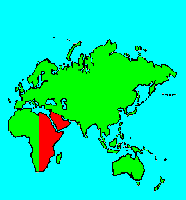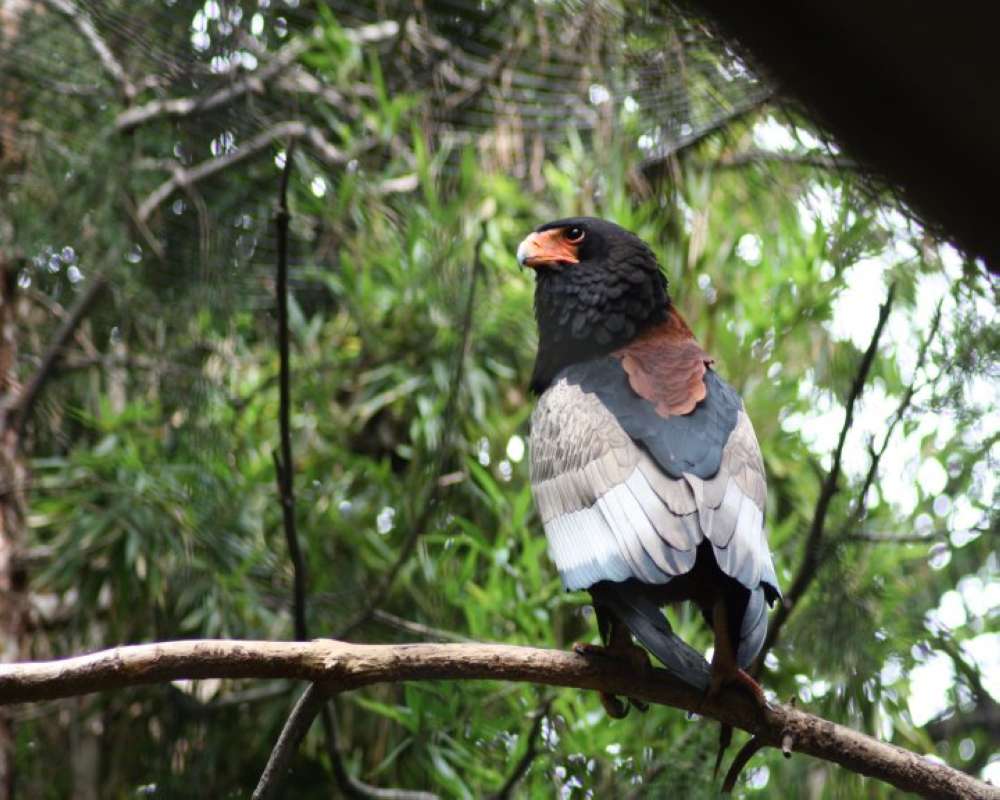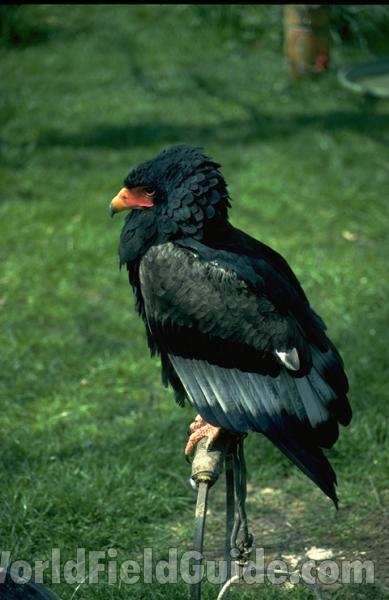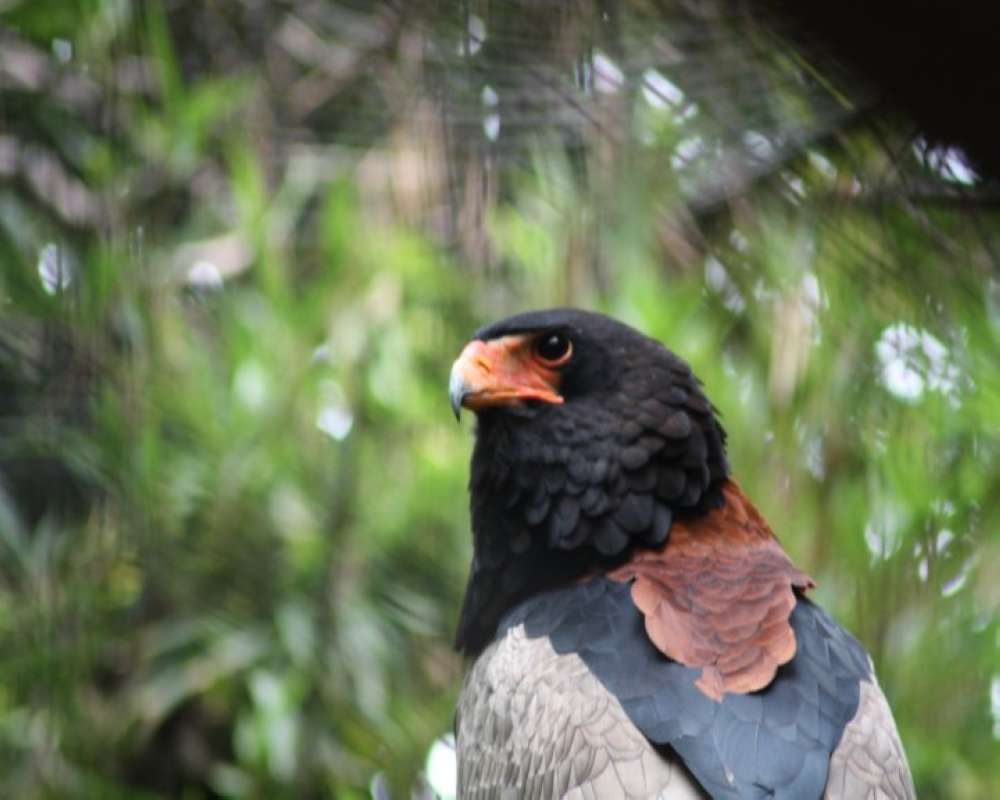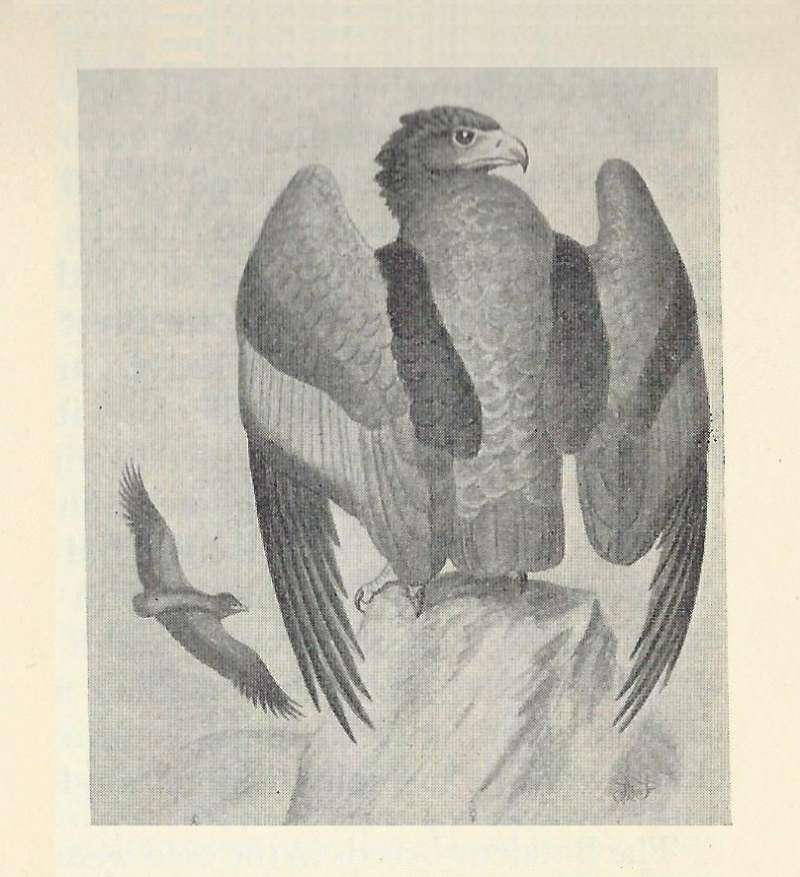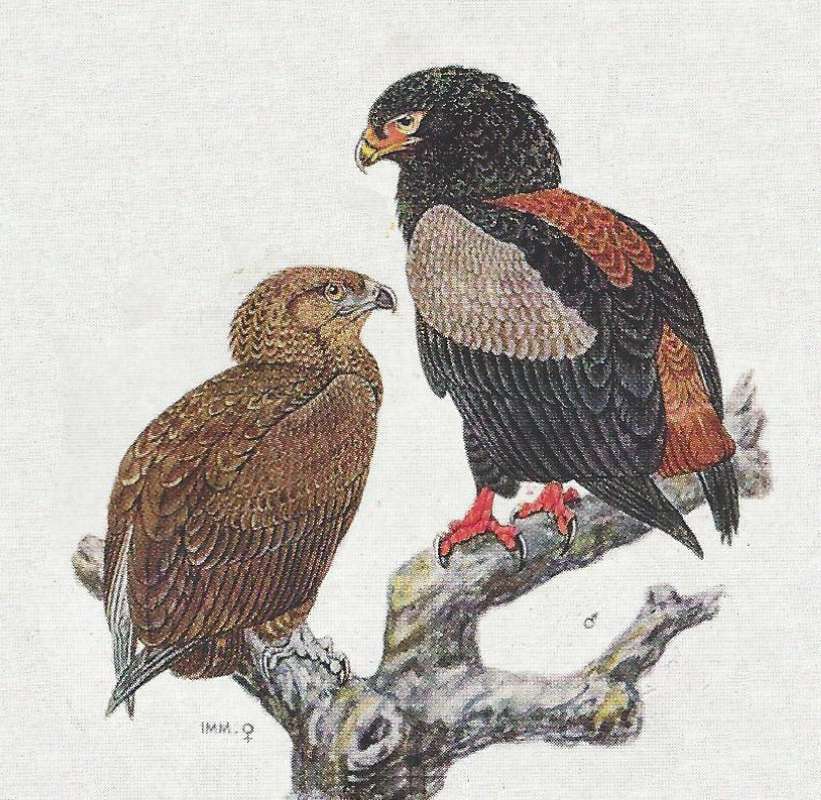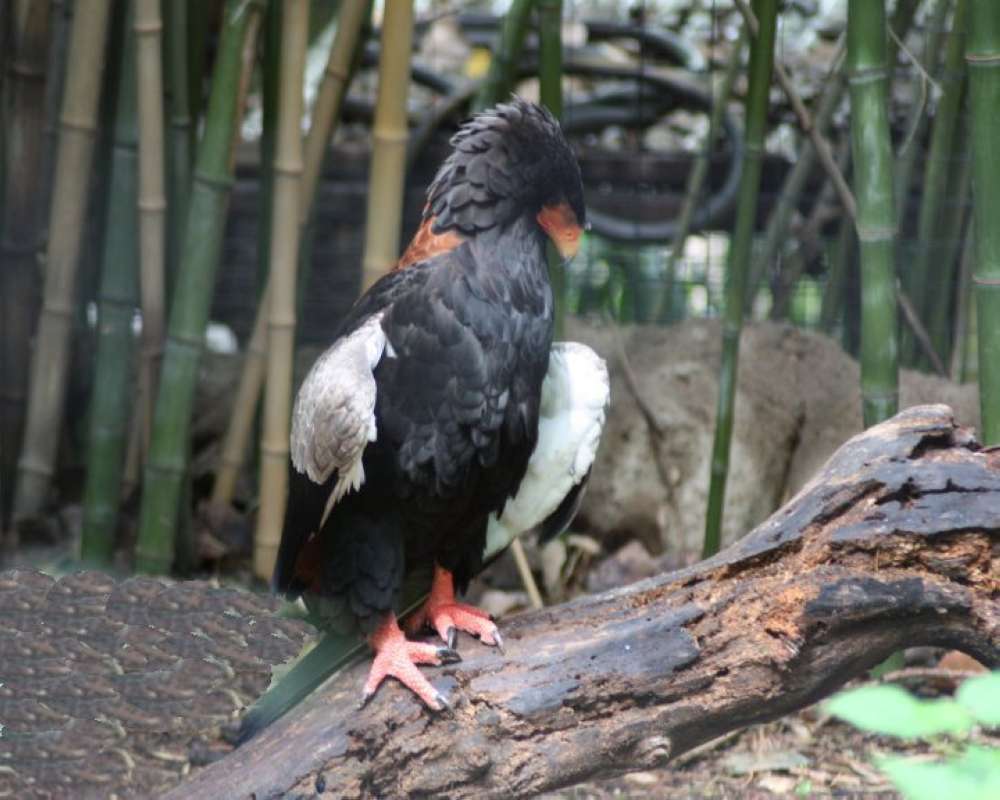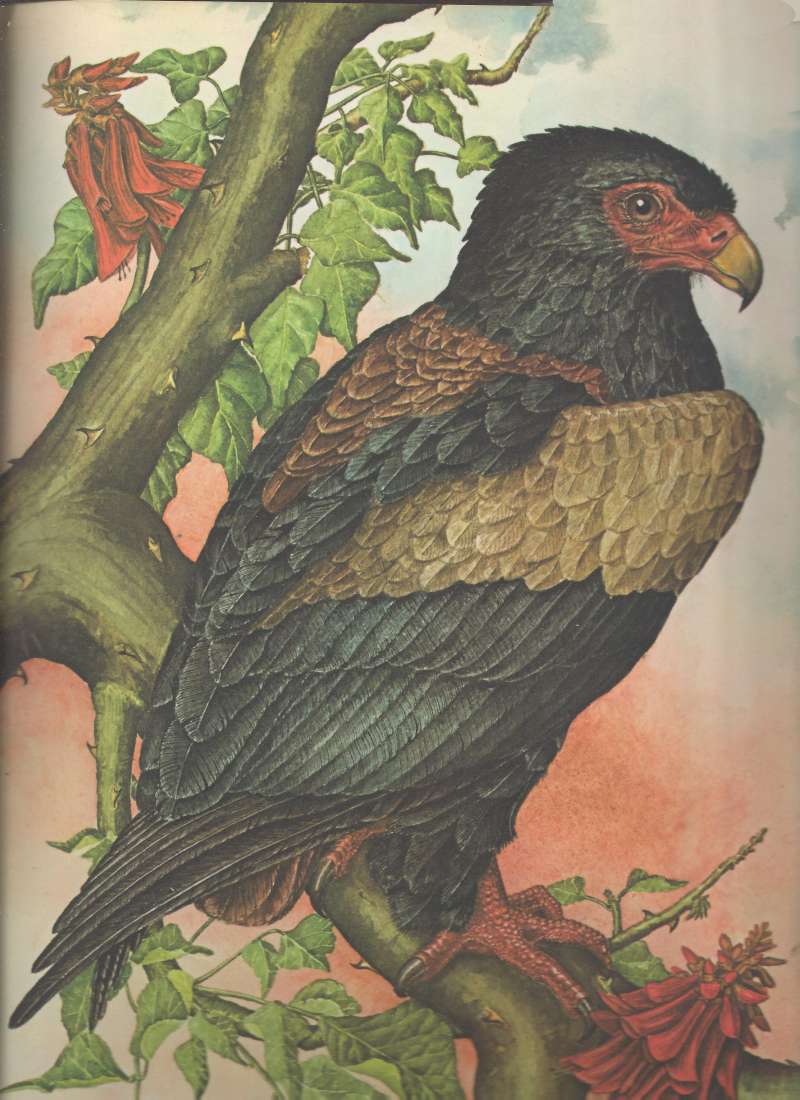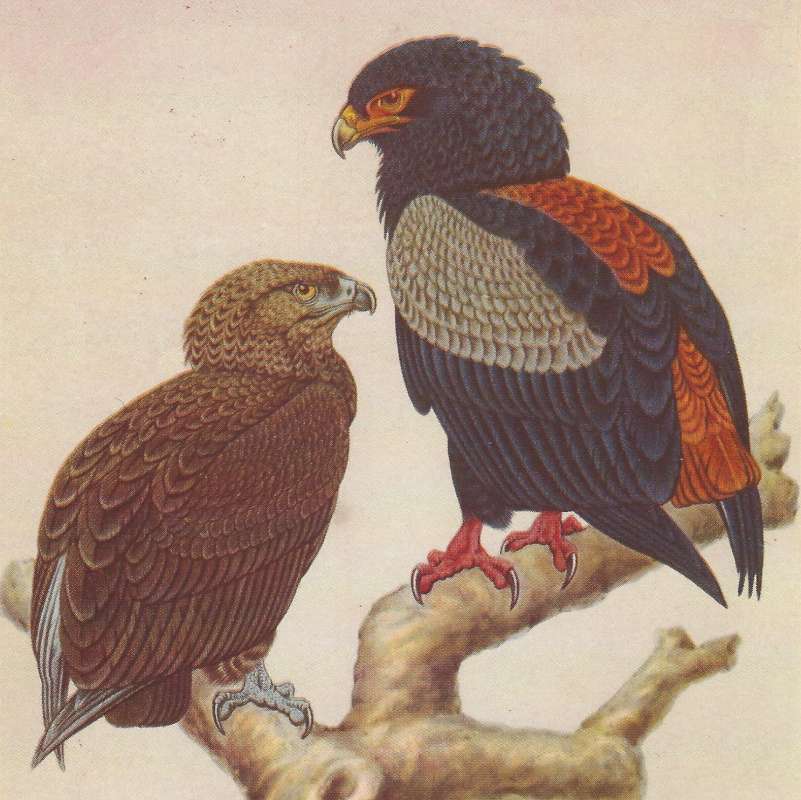SPECIES INFO
Bateleur Eagle (Terathopius ecaudatus) is found in Asia Minor and east Africa. This eagle is also found in southern Africa, but usually not as far south as South Africa. This 24 inch eagle can be recognized by its short tail. The area between the eye and the bill is red. The head and neck is black. The breast is black. The male wings are light and dark brown and the female wings are similar but have a white patch. When flying the dark breast and spreading wing tip feathers will help identify this eagle.
There are no subspecies.The bateleur eagle genus (Terathopius) contains a single species. This is found from Senegal (west Africa) east through Sudan(north eastern Africa) to the Red Sea and south to Botswana in southern Africa. The black breast and white wings entirely edged with black will identify this eagle from below in flight.
This is a diverse sub-family including many well known eagles and several large well known hawks including the Red Shoulder Hawk and the rest of the Buteo genus.
Hawks and Eagles (Family Accipitridae) are a group of 205 species found in most areas of the world. Actually, the common terms of eagle, hawk, kite, buzzard, and vulture are rather loosely used, and consequently, are not much help in understanding this family. Here, this family has been separated into seven groups: typical hawks, Old World vultures, eagles and related hawks, fish eagles, kites, harriers and marsh hawks, and a misc. group. A more precise division might be:
Aegypinae - Old World Vultures -
Elaninae - White Tailed Kites - 7 species
Perninae - Swallowtailed and Hook Billed Kites
Milvinae - True kites -
Accipitrinae - Hunting hawks - 40 species
Buteoninae - Large hawks and eagles - 90 species
Circinae - Harriers and marsh hawks - 17 species
Circaetinae - Serpent eagles
There is no universal agreement on the division of this group, and some authors lump them altogether. We hope our arbitrary separation helps in the study of this group.
Birds of Prey (Order Falconiformes) group contains the eagles, hawks, falcons, Old World vultures, and related birds. The majority of the species in this group feed on small animals, fish, and other birds. A few species eat dead animals. Most of them are excellent fliers and have very strong legs and claws for grasping their prey. There are about 239 species in the hawk and eagle group and about 61 species in the falcon group. When you include the unique osprey and the unique secretary bird, you total about 302 species more or less depending upon a few controversial subspecies.
(The 7 species of New World vultures have recently been placed near the pelicans and storks and were not counted in our 302 number. However, for historical reasons we have left those vultures below here, as our purpose is defining species, and helping users navigate the large number of species.)
Aves contains about 8,650 different species of living birds known to science. Each year about one new species is discovered in some remote rain forest or remote island. In addition, scientists have been raising many subspecies to full species status which may raise the species count to 10,000. Birdlife recognizes 10,027 species as of 2011.
However, each year about one species goes extinct. The rate of extinction is increasing, and the rate of new discovery is decreasing, so that the number of bird species will soon begin to decline rapidly. Although different taxonomists would organize the birds differently, there are approximately twenty-seven orders of birds. These orders are broken down into about one hundred and fifty-five different families.
Recent research of the genetic structure of some of the shore birds and owls would indicate that the present organization of orders and families should have some modification.
The birds are a worldwide group of animals that are characterized by having the front limbs modified into wings that are used for flying. Perhaps the most unique feature of the birds is the feathers. These feathers are made up of a central support called a quill and a series of small filaments that are hooked together as barbs.
For many years it was believed that Archaeopteryx discovered in Bavaria was the oldest bird from about 150 million years ago. However, in l986, Sankar Chattterjee, a Texas paleontologist, reportedly discovered a bird in the genus Protoavis that lived about 225 million years ago.
When this project was begun in 1978, we used Austin & Singer for bird taxonomy. Since then, we have adopted many changes, but have kept some older concepts that are still found widely in the literature. Recently, we have used Clements and Howard & Moore. Very recently, we have used Monroe and Sibley for the higher taxonomy of the perching birds.
Backboned Animals (Phylum Chordata) are the most advanced group of animals on earth. These animals are characterized by having a spinal cord or backbone. Most members have a clearly defined brain that controls the organism through a spinal cord. Fish, amphibians, reptiles, birds, and mammals are in this phylum.
Currently, some taxonomists believe that the fish should be divided into two groups (sharks and regular fishes) and that there are some other primitive groups in the phylum such as hagfish or lampreys.
Animal Kingdom contains numerous organisms that feed on other animals or plants. Included in the animal kingdom are the lower marine invertebrates such as sponges and corals, the jointed legged animals such as insects and spiders, and the backboned animals such as fish, amphibians, reptiles, birds, and mammals.
